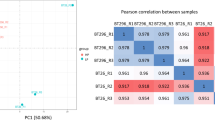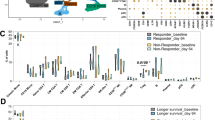Abstract
The protozoan parasite Theileria parva, which is transmitted by the tick Rhipicephalus appendiculatus, produces an acute fatal infection in the lymphoid system of susceptible cattle1. This disease is a serious constraint to livestock improvement and production in large areas of East Africa1. The parasite invades host lymphocytes, inducing rapid proliferation followed by widespread lymphocytolysis2. Cattle which recover from theileriosis (East Coast fever) spontaneously, or which are immunized by infection and treatment with tetracycline3, are resistant to reinfection with the same isolate of T. parva for at least 3 yr4. Immunity against infection with the parasite cannot be ascribed to the production of specific antibodies5, but can be transferred adoptively between twins with thoracic duct leukocytes from the immunized partner6. These observations suggest that protective immunity is associated with cell-mediated mechanisms. We have now examined the capacity of leukocytes from immune cattle to lyse parasitized lymphoblastoid and non-parasitized tumour cell lines either directly or after stimulation in an autologous mixed lymphocyte reaction (MLR). In contrast to the nonspecific lytic activity of leukocytes from immune cattle reported by Pearson et al.7, we describe the sequential appearance in the lymph and blood of immune cattle, of cytotoxic leukocytes with activity restricted to target cells carrying the autologous genotype. These observations suggest that a major component of protective immunity to T. parva is mediated by cytotoxic cells which lyse parasitized cells in a genetically restricted fashion. We have also found that during a primary infection with T. parva cytotoxicity was manifested against allogeneic parasitized cells and xenogeneic uninfected target cells, but not against autologous infected cells. The features of cell-mediated immunity to T. parva during primary infection and immunization are discussed more fully elsewhere8.
This is a preview of subscription content, access via your institution
Access options
Subscribe to this journal
Receive 51 print issues and online access
$199.00 per year
only $3.90 per issue
Buy this article
- Purchase on SpringerLink
- Instant access to full article PDF
Prices may be subject to local taxes which are calculated during checkout
Similar content being viewed by others
References
Barnett, S. F. Bull Epizoot. Dis. Afr. 5, 543–557 (1957).
De Martini, J. C. & Moulton, J. F. J. comp. Path. 83, 281–298 (1973).
Radley, D. E. et al. Vet. Parasit. 1, 51–60 (1975).
Burridge, M. J., Morzaria, S. P., Cunningham, M. P. & Brown, C. G. D. Parasitology 64, 511–515 (1972).
Wagner, G. G., Duffus, D. P. H. & Burridge, M. J. Parasitology 69, 43–53 (1974).
Emery, D. L. Res. vet. Sci. (in the press).
Pearson, T. W., Dolan, T. T., Stagg, D. S. & Lundin, L. B. Nature 281, 678–680 (1979).
Emery, D. L., Eugui, E. M., Nelson, R. & Tenywa, T. Immunology (in the press).
Brown, C. G. D., Stagg, D. A., Purnell, R. E., Kanhai, G. K. & Payne, R. C. Nature 245, 101–103 (1973).
Cikes, M., Friberg, S. Jr & Klein, G. J. Natn. Cancer Inst. 50, 347–350 (1973).
Emery, D. L. & Morrison, W. I. Immunology 40, 229–237 (1980).
Doherty, P. C. & Zinkernagel, R. M. J. exp. Med. 141, 502–507 (1975).
Shearer, G. M., Rehn, G. R. & Garbarino, C. A. J. exp. Med. 141, 1348–1356 (1975).
Purnell, R. E. Adv. Parasit. 15, 83–132 (1977).
Buscher, G., Morrison, W. I. & Nelson, R. (in preparation).
Eugui, E. M. & Allison, A. C. Bull. Wld Hlth Org. 57, Suppl. 1, 231–238 (1979).
Author information
Authors and Affiliations
Rights and permissions
About this article
Cite this article
Eugui, E., Emery, D. Genetically restricted cell-mediated cytotoxicity in cattle immune to Theileria parva. Nature 290, 251–254 (1981). https://doi.org/10.1038/290251a0
Received:
Accepted:
Issue date:
DOI: https://doi.org/10.1038/290251a0
This article is cited by
-
Comparative evaluation of cell-mediated immune response in calves immunized with live-attenuated and killed Theileria annulata vaccines
Parasitology Research (2023)
-
Sequence diversity between class I MHC loci of African native and introduced Bos taurus cattle in Theileria parva endemic regions: in silico peptide binding prediction identifies distinct functional clusters
Immunogenetics (2016)
-
Production of interferon byTheileria annulata-andT. parva-infected bovine lymphoid cell lines
Parasitology Research (1993)
-
Techniques for the generation, cloning, and characterization of bovine cytotoxic T cells specific for the protozoan Theileria parva
Journal of Tissue Culture Methods (1988)
-
Isolation and immunoelectronmicroscopical characterization ofTheileria annulata macroschizonts
Zeitschrift f�r Parasitenkunde Parasitology Research (1986)



